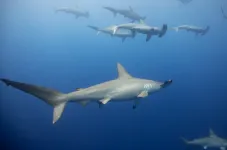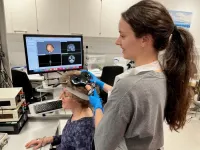(Press-News.org) Commercial fishing employs 1.2 million Americans and generates more than $165 billion annually. Yet warming waters are threatening fish populations and disrupting fisheries around the world—a challenge set to worsen as climate change advances. Despite the importance of sustaining fisheries, the reauthorization of the cornerstone policy protecting them in the United States—the Magnuson-Stevens Act—has been stalled in Congress for a decade. The holdup? Some blame the policy for being too stringent and leading to what they call “underfishing,” while others argue the policy is not doing enough to rebuild depleted fish populations. Others go so far as to argue that fish populations would have rebounded without any policy.
A pair of studies finds these concerns to be largely unsubstantiated. In analyzing the policy’s impact on fish populations, fishing, and industry revenue, they find that it is working essentially as it should. It is rebuilding fish populations, and in most cases it is not unduly holding back fishers from making their catch.
“Many people talk about the need to manage our resources sustainably,” says Eyal Frank, a lead author of the studies and an assistant professor at the University of Chicago Harris School of Public Policy. “Too often, this becomes just talk with little evidence that our policies are making a difference. Our studies provide that evidence. Our fishing policy is working, and that is very encouraging news at a time when sustaining our fisheries couldn’t be more vital.”
Kimberly Oremus, co-lead author of the studies and an assistant professor at the University of Delaware’s School of Marine Science and Policy, adds, “With many of the world's fisheries in decline, our findings show that sustainable fishing is possible with the right policies.”
In a study published in Science, Frank, Oremus and their other co-authors first examine the assertion of critics of U.S. fishing policy that it is too stringent and unnecessarily leaving too many fish in the water. They find that the main reason about half of the fish stocks considered “underfished” in this way is due to pure economics. Fishers are not harvesting the fish because there is not enough demand for them. Other healthy fish stocks are being left in the water because they could not be profitably caught without also catching other fish species that are depleted. Just four fish species make up the majority of the revenue of those “underfished.” And, of those, the majority of the revenue came from just one species: the walleye pollock, the catch of which is not constrained by our federal fisheries law.
“If the concern is lost revenue or catch, it would make the most sense to narrow the focus to this small number of high-value stocks, which are constrained for specific reasons that may or may not prove tractable,” the researchers write.
In a second study, Frank and Oremus look at a separate criticism of the policy: that it is not doing enough to rebuild fish populations or that fish populations would have rebounded on their own without the policy. They discover the opposite to be true. Fish subject to the policy saw their size increase to be 52.2 percent larger than those comparable fish in the European Union, where similar fishing policies were not yet in effect. Comparing US fish populations that were depleted before the rebuilding policy went into effect to US fish populations that were depleted after the policy went into effect, Frank and Oremus find that in the absence of policy the declining fish populations continued to decline by about 45 percent. But when the policy took effect, it took five to 10 years for the fish population to double in size—recovering to be about 98 percent greater in size than when it was first threatened.
Frank and Oremus show that the policy clearly leads to long-term gains in the fish population. But how does it impact the industry? The researchers find that the fish catch and revenue declined in the first years of rebuilding, but then recovered to pre-rebuilding levels or higher within a decade. In fact, the authors report results that suggest that in the 10 to 15 years after being subject to the rebuilding efforts, the size of the catch for fish populations that had fully recovered was 51.9 percent higher than that of equivalent fish stocks in the EU.
“We hope these studies provide useful evidence for policymakers that science-based management of biological resources actually works,” Oremus says.
END
U.S. Fishing Policy is Boosting Fish Populations, Not Constraining Most Fisheries
Despite being stalled in Congress, a pair of studies finds the cornerstone fishing policy in the United States is doing its job: rebuilding threatened fish populations to double their size, while not holding back most fishers from making their catch.
2023-05-11
ELSE PRESS RELEASES FROM THIS DATE:
Human ancestors preferred mosaic landscapes and high ecosystem diversity
2023-05-11
A new study published in the journal Science by an international team finds that early human species adapted to mosaic landscapes and diverse food resources, which would have increased our ancestor’s resilience to past shifts in climate.
Our genus Homo evolved over the past 3 million years – a period of increasing warm/cold climate fluctuations. How early human species have adapted to the intensification of climate extremes, ice ages, and large-scale shifts in landscapes and vegetation remains elusive. ...
Hammerhead sharks hold their breath on deep water hunts to stay warm
2023-05-11
Scalloped hammerhead sharks hold their breath to keep their bodies warm during deep dives into cold water where they hunt prey such as deep sea squids. This discovery, published today in Science by University of Hawai‘i at Mānoa researchers, provides important new insights into the physiology and ecology of a species that serves as an important link between the deep and shallow water habitats.
“This was a complete surprise!” said Mark Royer, lead author and researcher with the Shark Research Group at the Hawai‘i Institute of Marine Biology (HIMB) in the UH Mānoa School of ...
The feeling of hunger itself may slow aging in flies
2023-05-11
From low-carb to intermittent fasting, surgery to Ozempic—people turn to a seemingly never-ending array of diets, procedures and drugs to lose weight. While it has been long understood that limiting the amount of food eaten can promote healthy aging in a wide range of animals, including humans, a new study from University of Michigan has revealed that the feeling of hunger itself may be enough to slow aging.
Previous research has demonstrated that even the taste and smell of food can reverse the beneficial, life-extending effects of diet restriction, even without its consumption.
These intriguing findings drove first author Kristy Weaver, Ph.D., principal investigator ...
Nature is changing as land abandonment increases
2023-05-11
When people leave their rural lives behind to seek their fortunes in the city or agriculture is no longer profitable, the lands they toiled on are often left unused. A new perspective piece in Science shows that these abandoned lands could be both an opportunity and a threat for biodiversity, and highlights why abandoned lands are critical in the assessment of global restoration and conservation targets.
The past 50 years have seen an increased exodus of populations from rural to urban areas. Today, 55% ...
First-of-its-kind measurement of the Universe’s expansion rate weighs in on a longstanding debate in physics and astronomy
2023-05-11
Thanks to data from a magnified, multiply imaged supernova, a team led by University of Minnesota Twin Cities researchers has successfully used a first-of-its-kind technique to measure the expansion rate of the Universe. Their data provide insight into a longstanding debate in the field and could help scientists more accurately determine the Universe’s age and better understand the cosmos.
The work is divided into two papers, respectively published in Science, one of the world’s top peer-reviewed academic journals, and The Astrophysical Journal, a peer-reviewed scientific journal of astrophysics and astronomy.
In astronomy, there are two precise ...
Historic achievement for international penile cancer trial--100 patients enrolled thus far, the most ever to a prospective study for treatment of an extremely rare disease
2023-05-11
Cancer of the penis is not a subject that comes up in conversation. When it does, one common response is, “I didn’t know you could get cancer there.” Not only is it not spoken about, but it is also rare, with fewer than one case per 100,000 men diagnosed in developed countries like the United States and the United Kingdom per year. That rarity has meant far fewer clinical trials have been developed and conducted to guide its treatment, and in most cases, only small numbers of patients have been included. Fortunately, researchers from both sides ...
Getting active, while living with a partial spinal cord injury
2023-05-11
A UBC Okanagan researcher has been testing the effectiveness of a mobile app that encourages people living with a spinal cord injury—but can walk—to get active.
Dr. Sarah Lawrason, a researcher in the School of Health and Exercise Sciences, has focused her career on working with people who live with a spinal cord injury (SCI) but are ambulatory. She describes this population as an isolated, often misunderstood group of people because while they live with an SCI, they may not rely on a wheelchair all of the time for mobility.
“When people think of someone with an SCI, they picture a ...
New, free online language course helps you learn Ojibwe
2023-05-11
TORONTO – May 11, 2023 – With funding from Canada’s Social Sciences and Humanities Research Council (SSHRC), Baycrest, the Kingston Indigenous Language Nest (KILN) and the University of Toronto have released a free online language course to learn the Indigenous language Ojibwe, also known as Anishinaabemowin.
The Ojibwe language is spoken in Indigenous communities around the Great Lakes in Canada and the US, but serious efforts are needed to ensure the long-term survival of the language.
“Due to the aging of people who ...
New research sheds light on the causes of fatigue after COVID 19
2023-05-11
Experts from Newcastle University found the nervous system of people with post-Covid fatigue was underactive in three key areas. Fatigue is one of the most common symptoms of long Covid.
The breakthrough could lead to better treatment and tests to identify the condition and the team are already progressing the work having just started a trial. They have begun recruiting patients to test the effectiveness of a TENS machine – commonly used for pain relief in childbirth – to alleviate the fatigue in patients with long Covid.
Newcastle University ...
Into the Blue: Securing a sustainable future for kelp forests
2023-05-11
Into the Blue: Securing a Sustainable Future for Kelp Forests global synthesis report is the most comprehensive knowledge review on kelp to date, revealing the state of science on the world’s kelp forests and providing recommended actions to build the recovery of the world’s kelp forests.
Aiming to improve our understanding of the value of kelp forests and provide recommendations to protect and sustainably manage them, the report also provides a range of policy and management interventions and options that can be used to maintain these remarkable ecosystems into the future and to support the people and economies that have depended on them for generations.
Despite ...
LAST 30 PRESS RELEASES:
Numbers in our sights affect how we perceive space
SIMJ announces global collaborative book project in commemoration of its 75th anniversary
Air pollution exposure and birth weight
Obstructive sleep apnea risk and mental health conditions among older adults
How talking slows eye movements behind the wheel
The Ceramic Society of Japan’s Oxoate Ceramics Research Association launches new international book project
Heart-brain connection: international study reveals the role of the vagus nerve in keeping the heart young
Researchers identify Rb1 as a predictive biomarker for a new therapeutic strategy in some breast cancers
Survey reveals ethical gaps slowing AI adoption in pediatric surgery
Stimulant ADHD medications work differently than thought
AI overestimates how smart people are, according to HSE economists
HSE researchers create genome-wide map of quadruplexes
Scientists boost cell "powerhouses" to burn more calories
Automatic label checking: The missing step in making reliable medical AI
Low daily alcohol intake linked to 50% heightened mouth cancer risk in India
American Meteorological Society announces Rick Spinrad as 2026 President-Elect
Biomass-based carbon capture spotlighted in newly released global climate webinar recording
Illuminating invisible nano pollutants: advanced bioimaging tracks the full journey of emerging nanoscale contaminants in living systems
How does age affect recovery from spinal cord injury?
Novel AI tool offers prognosis for patients with head and neck cancer
Fathers’ microplastic exposure tied to their children’s metabolic problems
Research validates laboratory model for studying high-grade serous ovarian cancer
SIR 2026 delivers transformative breakthroughs in minimally invasive medicine to improve patient care
Stem Cell Reports most downloaded papers of 2025 highlight the breadth and impact of stem cell research
Oxford-led study estimates NHS spends around 3% of its primary and secondary care budget on the health impacts of heat and cold in England
A researcher’s long quest leads to a smart composite breakthrough
Urban wild bees act as “microbial sensors” of city health.
New study finds where you live affects recovery after a hip fracture
Forecasting the impact of fully automated vehicle adoption on US road traffic injuries
Alcohol-related hospitalizations from 2016 to 2022
[Press-News.org] U.S. Fishing Policy is Boosting Fish Populations, Not Constraining Most FisheriesDespite being stalled in Congress, a pair of studies finds the cornerstone fishing policy in the United States is doing its job: rebuilding threatened fish populations to double their size, while not holding back most fishers from making their catch.





